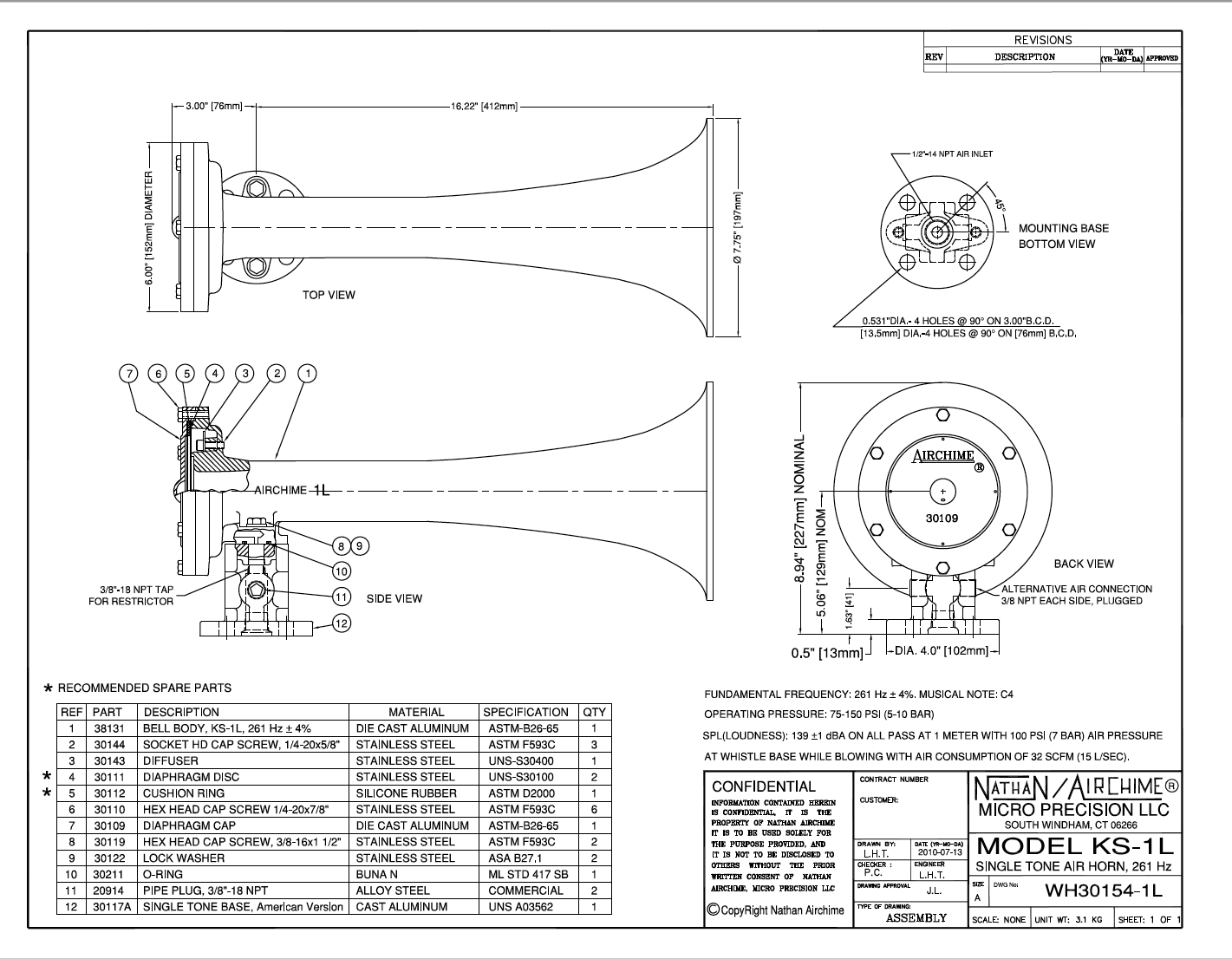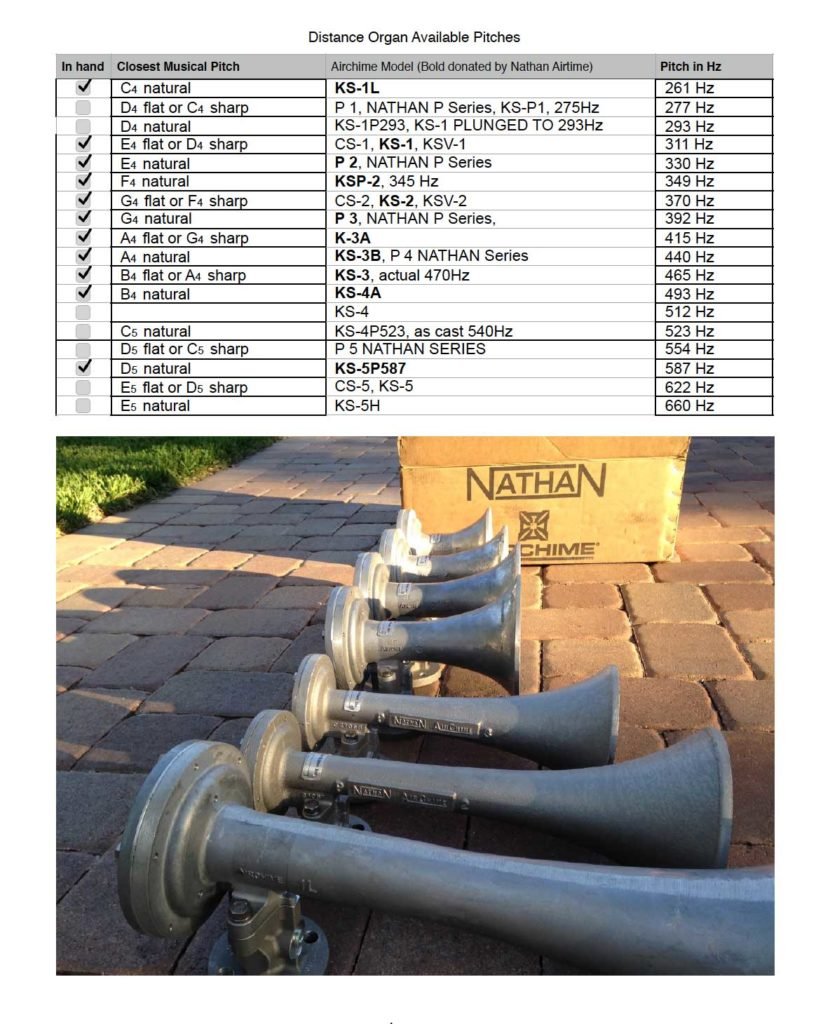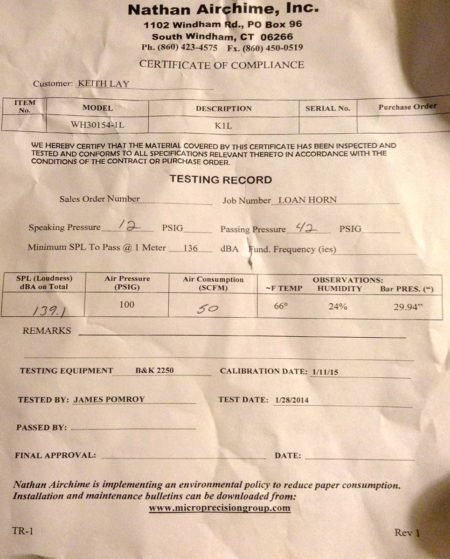
The Nathan Airchime KS-1L Train Horn (C4)
Train Horns??
I love the quiet of nature and abhor loud, obtrusive man-made noise.
Train horns are my best choice to create the giant musical sculpture that can be ‘seen’ through listening; that can immerse an outdoor space with melody that provides a synchronizing foot for multiple, simultaneous ensembles of live musicians.
Traditional instruments can’t produce enough sound to be heard across the distances required to clearly hear delays. We don’t begin to hear any two separate sound sources until they are separated by about 50 milliseconds of time, which requires about 50 ft. of distance. To hear rhythmically significant differences, hundreds of feet between sources would be necessary. But, the sound of traditional instruments can’t carry for hundreds of feet. Louder sound through electronic amplification could also make longer distances possible. But three serious drawbacks make it impractical: 1. The electrical power of the magnitude necessary would impractical if stored in batteries or the sent through power lines across many acres; 2. Electricity is dangerous, especially in the out of doors where it can rain – or be around water; and 3. It might require a microphone – which, in the case of this kind of high amplification, risks feedback.
Train horns are the best acoustic instrument available that is designed to be heard over large distances (3 miles). They have the advantage of being extremely rugged and dependable outdoor, all-weather devices. Their most important benefit is that they are not powered by electricity, yet can provide nearly 140dB of sound at 1 meter. They are powered by gas, usually compressed air. I chose to power them with one of the most powerful potential-energy storage devices available – steel cylinders filled with 304 cubic feet of high-pressure Nitrogen, N2, gas.
Crew and Audience Safety
Each apparatus will be accompanied by a trained operator, protected with high-quality, active ear protection and thorough training on safety protocols. Audiences will not be allowed near horns whenever charged. The horns cannot be activated without receiving a signal from the master unit, which will be in my possession. Active units can be quickly and easily shut down with a single flip of a large, easy to see, accessible switch – even if they are receiving radio signals from the master. The entire system can be shut down by either powering down the master the same way, or stopping the sequence by hitting a space bar on the laptop sequencer.
Nathan Airchime Air Horns

 Eleven different pitches have been made available to the Distance Music project, thanks to the generosity of Nathan Airchime. Each horn is capable of producing a clear, balanced tone from C4 to D5. All but two horns are the “K” series design with a 6-inch diameter air chamber and a 1/2″ NPT gas inlet. The “P” series horns, the 2nd and 3rd horns from the front, as seen in the photograph, have a smaller chamber and 3/8″ inlet. The “P” horns take about 10ms longer to respond and often start their note with an upper harmonic whistle. This can be corrected by starting each pitch sent to them 10ms ahead of the other horns.
Eleven different pitches have been made available to the Distance Music project, thanks to the generosity of Nathan Airchime. Each horn is capable of producing a clear, balanced tone from C4 to D5. All but two horns are the “K” series design with a 6-inch diameter air chamber and a 1/2″ NPT gas inlet. The “P” series horns, the 2nd and 3rd horns from the front, as seen in the photograph, have a smaller chamber and 3/8″ inlet. The “P” horns take about 10ms longer to respond and often start their note with an upper harmonic whistle. This can be corrected by starting each pitch sent to them 10ms ahead of the other horns.
